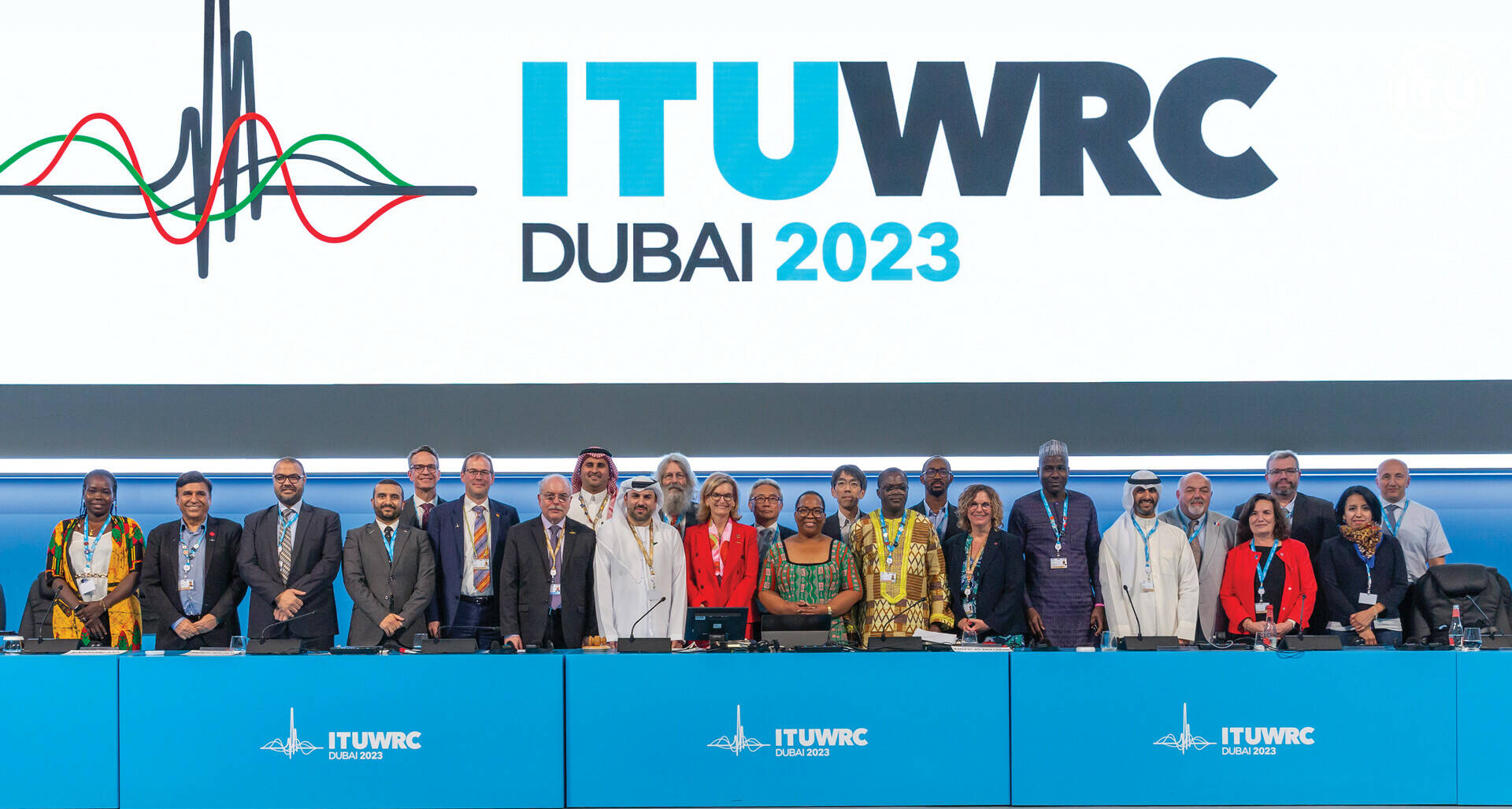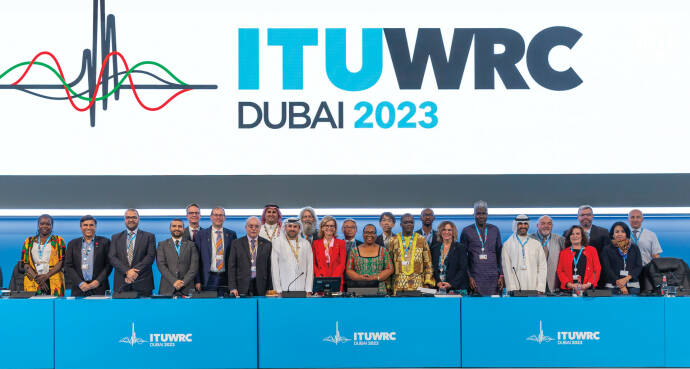


For more information please contact Startical: startical.com
The scope of the VOICE project was focused on the development of the ground segment and the corresponding integration with the operational systems.
During the demonstration, actual VHF voice and data communications were performed, both with high quality signal and low latency:
VHF voice radio communications were established in all the tests performed using the VOICE platform equipment integrated with ANSP VCS systems. Voice radio communications were successfully exchanged between ANSPs and aircraft. Controllers and flight crew indicated that the audio quality was highly satisfactory.
VHF Data communication sessions were also established, using the VOICE platform equipment. The data communication was performed between the avionics of operating aircraft and ground systems, for both Future Air Navigation Systems (FANS) and Aeronautical Telecommunications Network (ATN), enabling the exchange of messages from the controller to the pilot and vice versa.
All the results obtained show that it is possible that the expected future development of a space-based infrastructure will lead to a reduction in minimum separation, supported by services that are currently provided in continental environment and that it can be established in oceanic airspace.
The VOICE project demonstrated that, with the use of satellite-based VHF communication combined with ADS-B surveillance, traffic in remote airspace could be handled similarly to continental traffic, and that current separation minima could be reduced without compromising safety. This implies a large number of benefits such as:
Greater sector capacity
Optimisation of ground infrastructures
More flexible and efficient routes
Reduction of fuel consumption
Reduction in CO2 emissions
The next steps in the road to Space-Based services for ATM, to be executed in parallel, will be the Space Segment demonstration and the regulatory work in ICAO.
For the Space Segment, and following the results of the VOICE Project, Startical is working with many stakeholders including ANSP’s, airlines, regulatory entities or Communication Service Providers (CSP), in a project called ECHOES. The ECHOES project will demonstrate the benefits of introducing direct-controller pilot-communication (DCPC) in oceanic airspace via VHF voice and via VHF VDL-Mode 2 data with the VHF ground stations being substituted by LEO satellites in combination with satellite-based ADS-B. All of this without the need for any changes in aircraft avionics or existing ATC systems.
ECHOES will confirm the technical feasibility of the services from space and will perform the first communications between ATCO and pilot/avionics from space. The demonstration will be performed along the Atlantic corridor involving actual traffic and air navigation service providers in Europe, Africa and South America.
The regulatory path will be carried out in the frame of ICAO in two different groups:
Depending on the Frequency Spectrum Management Panel (FSMP) the SB-VHF Coordination Group is dedicated to the development of frequency assignment procedures.
Depending on the Data Communication Infrastructure Working Group (DCIWG), the Future VHF Subgroup (FVSG) will review the standards and recommended practices that may complement the procedures.
The Startical Constellation is expected to be launched in 2029. As such, some services can be provided immediately (ADS-B) however others will need to wait until 2030-2031 (ATS-Comm) depending on regulatory advances and certifications.
Image: International Telecommunication Union (ITU)

As a result, Startical, the company created by ENAIRE and Indra to develop a constellation exclusively designed for ATM and dedicated to providing communication, navigation and surveillance (CNS) services, will be able to use the aeronautical frequency band, whose exploitation from space has been authorised to provide VHF communications services (voice and data). In addition to these communications services, Startical will also provide automatic dependent surveillance – broadcast ADS-B services from space.
The new attribution has been achieved after more than four years of work, participating in the different regional discussion forums of the ITU, sending comments to National Spectrum Regulatory Administrations and contributing with technical studies both in ICAO and in the ITU working groups to demonstrate:
The technical feasibility of the services from space.
The compatibility of new and existing services in both directions for both the same and adjacent bands.
That there is no need for changes to the existing infrastructure and no limits in the future use of existing ground services.
This is a historic event which opens the way for innovation and significant improvements in air traffic control by allowing the use of satellites to provide aeronautical services in oceanic and remote areas for any country around the world in the same way rather than the current continental services.
The first step towards a space-based solution for ATM services has demonstrated the feasibility of the ground segment as enabler of the space-based VHF communications in the oceanic airspace, the VOICE Project.


For more information please contact Startical: startical.com
The scope of the VOICE project was focused on the development of the ground segment and the corresponding integration with the operational systems.
During the demonstration, actual VHF voice and data communications were performed, both with high quality signal and low latency:
VHF voice radio communications were established in all the tests performed using the VOICE platform equipment integrated with ANSP VCS systems. Voice radio communications were successfully exchanged between ANSPs and aircraft. Controllers and flight crew indicated that the audio quality was highly satisfactory.
VHF Data communication sessions were also established, using the VOICE platform equipment. The data communication was performed between the avionics of operating aircraft and ground systems, for both Future Air Navigation Systems (FANS) and Aeronautical Telecommunications Network (ATN), enabling the exchange of messages from the controller to the pilot and vice versa.
All the results obtained show that it is possible that the expected future development of a space-based infrastructure will lead to a reduction in minimum separation, supported by services that are currently provided in continental environment and that it can be established in oceanic airspace.
The VOICE project demonstrated that, with the use of satellite-based VHF communication combined with ADS-B surveillance, traffic in remote airspace could be handled similarly to continental traffic, and that current separation minima could be reduced without compromising safety. This implies a large number of benefits such as:
Greater sector capacity
Optimisation of ground infrastructures
More flexible and efficient routes
Reduction of fuel consumption
Reduction in CO2 emissions
The next steps in the road to Space-Based services for ATM, to be executed in parallel, will be the Space Segment demonstration and the regulatory work in ICAO.
For the Space Segment, and following the results of the VOICE Project, Startical is working with many stakeholders including ANSP’s, airlines, regulatory entities or Communication Service Providers (CSP), in a project called ECHOES. The ECHOES project will demonstrate the benefits of introducing direct-controller pilot-communication (DCPC) in oceanic airspace via VHF voice and via VHF VDL-Mode 2 data with the VHF ground stations being substituted by LEO satellites in combination with satellite-based ADS-B. All of this without the need for any changes in aircraft avionics or existing ATC systems.
ECHOES will confirm the technical feasibility of the services from space and will perform the first communications between ATCO and pilot/avionics from space. The demonstration will be performed along the Atlantic corridor involving actual traffic and air navigation service providers in Europe, Africa and South America.
The regulatory path will be carried out in the frame of ICAO in two different groups:
Depending on the Frequency Spectrum Management Panel (FSMP) the SB-VHF Coordination Group is dedicated to the development of frequency assignment procedures.
Depending on the Data Communication Infrastructure Working Group (DCIWG), the Future VHF Subgroup (FVSG) will review the standards and recommended practices that may complement the procedures.
The Startical Constellation is expected to be launched in 2029. As such, some services can be provided immediately (ADS-B) however others will need to wait until 2030-2031 (ATS-Comm) depending on regulatory advances and certifications.
Image: International Telecommunication Union (ITU)

As a result, Startical, the company created by ENAIRE and Indra to develop a constellation exclusively designed for ATM and dedicated to providing communication, navigation and surveillance (CNS) services, will be able to use the aeronautical frequency band, whose exploitation from space has been authorised to provide VHF communications services (voice and data). In addition to these communications services, Startical will also provide automatic dependent surveillance – broadcast ADS-B services from space.
The new attribution has been achieved after more than four years of work, participating in the different regional discussion forums of the ITU, sending comments to National Spectrum Regulatory Administrations and contributing with technical studies both in ICAO and in the ITU working groups to demonstrate:
The technical feasibility of the services from space.
The compatibility of new and existing services in both directions for both the same and adjacent bands.
That there is no need for changes to the existing infrastructure and no limits in the future use of existing ground services.
This is a historic event which opens the way for innovation and significant improvements in air traffic control by allowing the use of satellites to provide aeronautical services in oceanic and remote areas for any country around the world in the same way rather than the current continental services.
The first step towards a space-based solution for ATM services has demonstrated the feasibility of the ground segment as enabler of the space-based VHF communications in the oceanic airspace, the VOICE Project.


